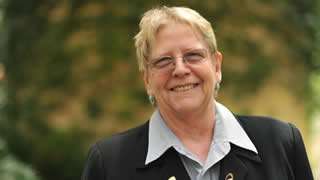I would consider myself a strong supporter of innovation, which probably explains why I enjoy the TV show, Shark Tank, where Australian entrepreneurs come to pitch their business ideas to a panel of self-made investors.
The program is a tangible reminder of the ingenuity that many Australians possess and our capacity to apply it to solve everyday problems. Some of the technology inventions showcased each week, including one by a 14-year-old boy, give me confidence that Australia can harness innovation to drive prosperity.
However, a capacity for innovation is just a starting point. We must ensure that we don’t just innovate for the sake of it, but that we balance creative licence with ethics and accountability to deliver “responsible innovation”.
It’s also essential that our governments provide the right legislative frameworks and incentives to encourage and enable this level of creativity, from the education we provide our children right through to the way we encourage and support entrepreneurial development.
Just last week, Atlassian co-founder Mike Cannon-Brookes took issue with the government’s $100 million cap on R&D expenditure, calling it a “short-sighted” policy. “Logically it doesn’t make any sense. Surely we want to promote R&D and innovation; why would we want to restrict that?” he asked. For Atlassian, a true Australian success story that is about to list on the New York Stock Exchange, R&D has always been integral to its growth and development.
Cannon-Brookes believes entrepreneurs and technology will be the only source of true job growth in the next 20 or 30 years. Given that he and co-founder Scott Farquhar built their business from nothing to a current valuation of $3.3 billion in just 12 years, he’s probably worth listening to. Imagine the possibilities if we had just a few more Atlassians. Atlassian has built its success on a foundation of encouraging creativity, commitment to quality and exceptional service. Its ShipIt Days, where staff have 24 hours to work on a project of their own choosing and compete for awards, are legendary.
Finding the right balance between innovation that responds to the changing needs of a business and the disciplines required for effective IT management is a significant challenge for many CIOs and has given rise to a new buzzword, Bimodal IT.
The brainchild of Gartner, Bimodal IT advocates that a business operate two distinct ICT teams: one focused on traditional ICT, which deals with larger vendors and issues requiring stability and efficiency, while the other takes a more agile or experimental approach to deliver rapid innovations. According to Gartner vice-president Dave Aron, the second group should be populated by “young turks whose attitude is, ‘if it ain’t broke, break it”.
I’m totally comfortable with this proposition with just one caveat. Someone must take responsibility for “breaking it”. That someone must have an awareness of social, ethical and legal implications, and be prepared to hold themselves accountable. Otherwise, I seriously question the wisdom of potentially throwing out “traditional” approaches to governance and risk that protect organisations and their shareholders from harm.
As qualified ICT professionals, ACS members stand for technical competence, ethical practice, professional principles and conduct, which all combine to ensure the highest possible standards of performance in the Bimodal IT model.
While digital disruption is a reality and businesses need to respond both quickly and flexibly to changing market conditions, it is essential that we do so in a way that is also responsible and consider the limitations posed by issues such as privacy, security and the need to mitigate risk. I’m interested in your thoughts. Is Bimodal IT the way of the future or just another buzzword? E-mail [email protected].
This article appeared first in The Australian on Tuesday, March 3, 2015.









